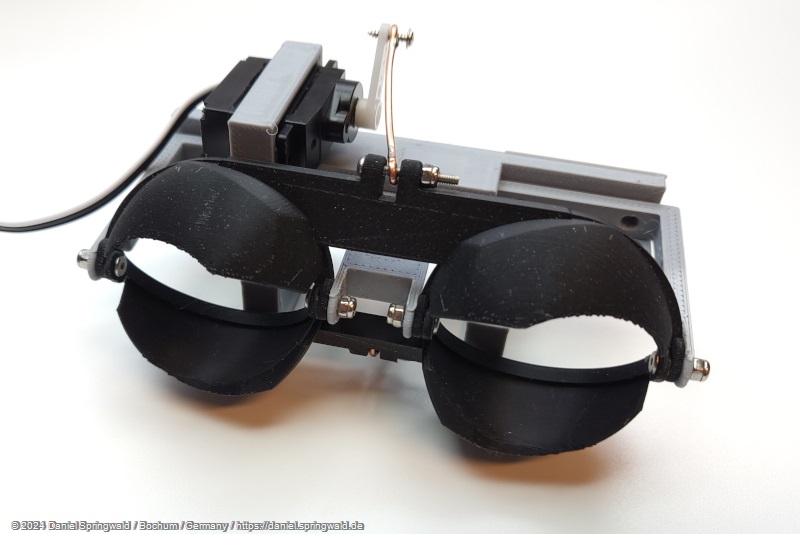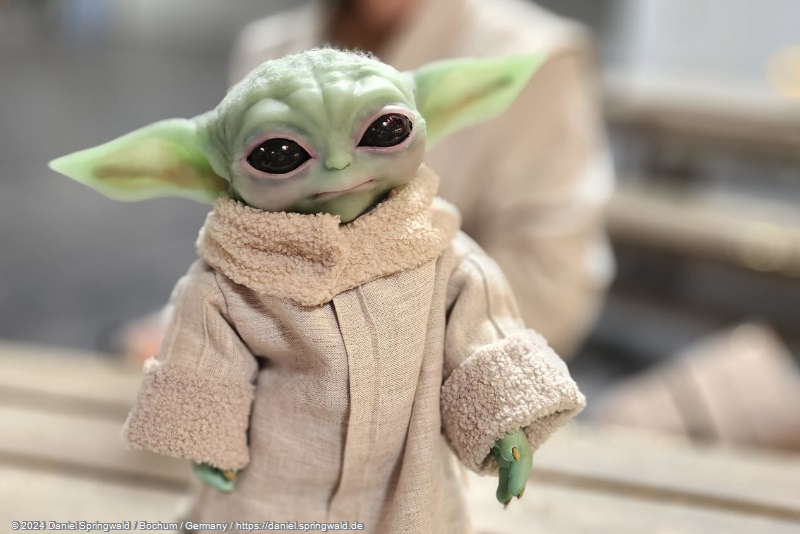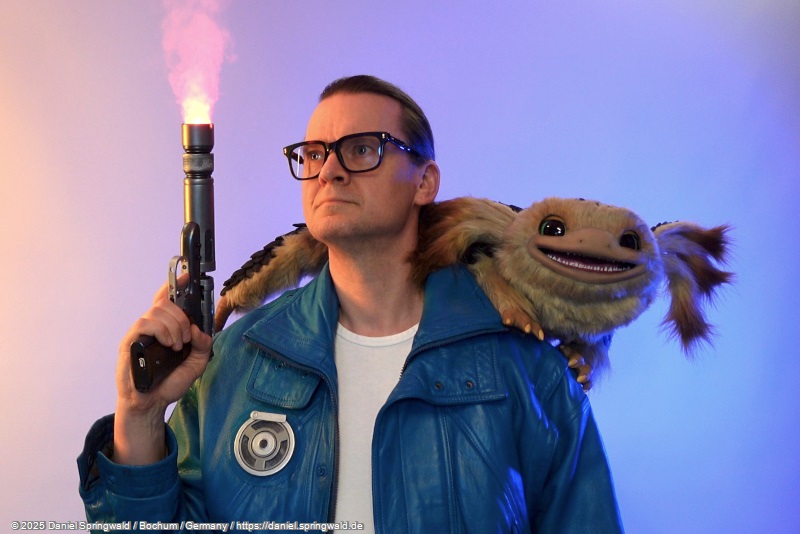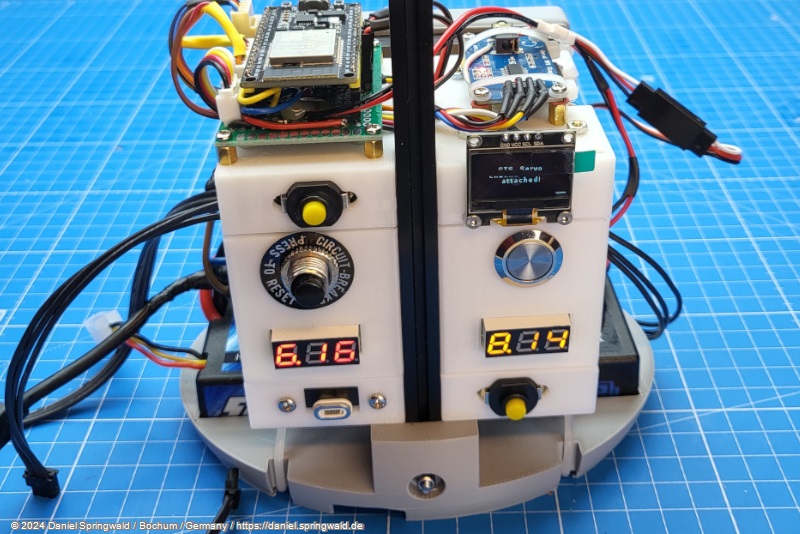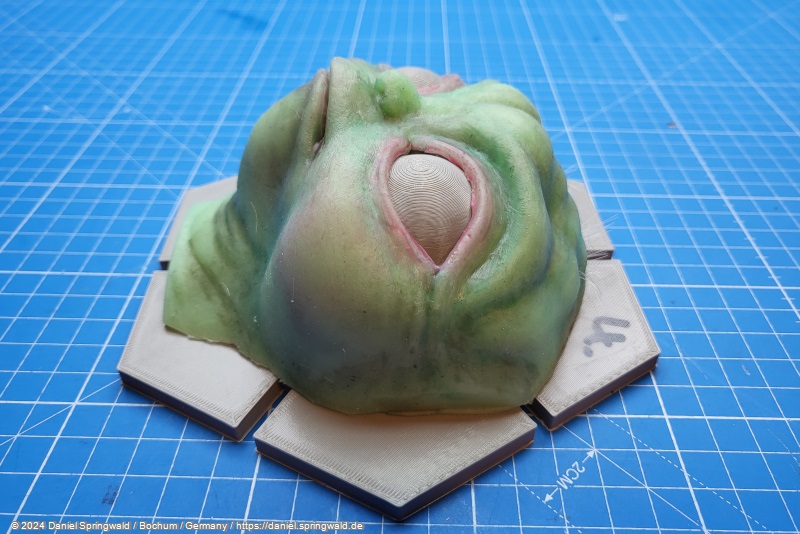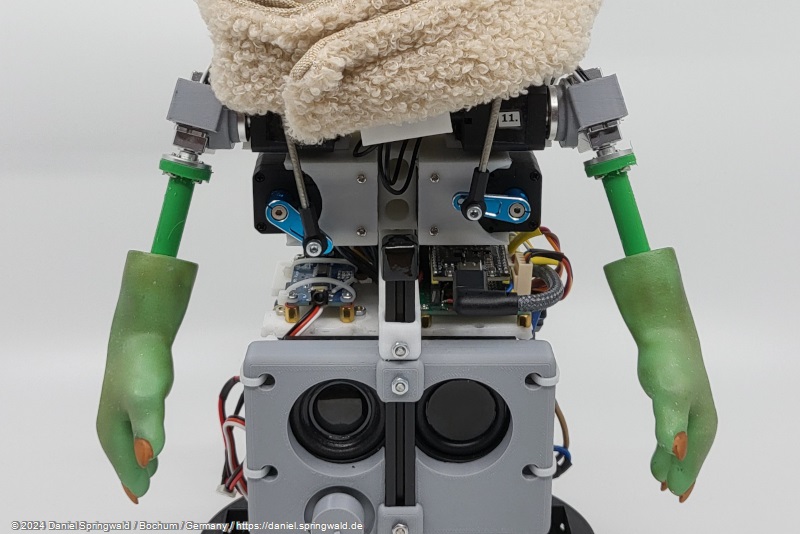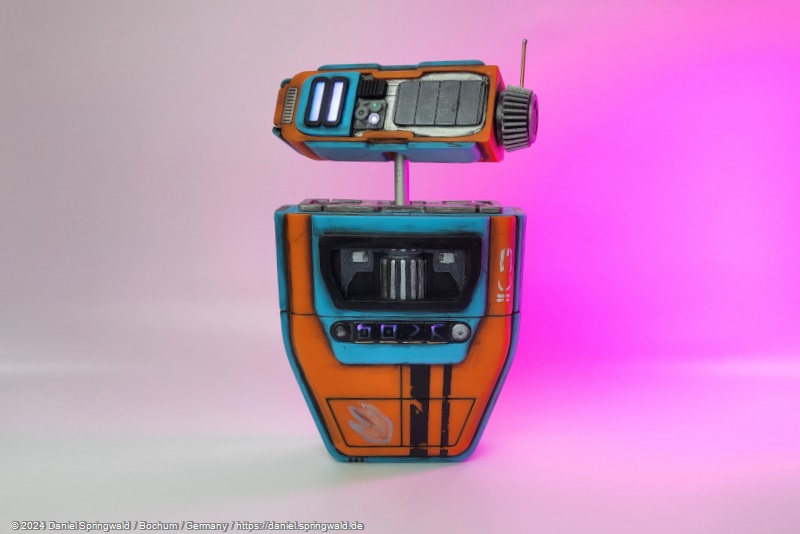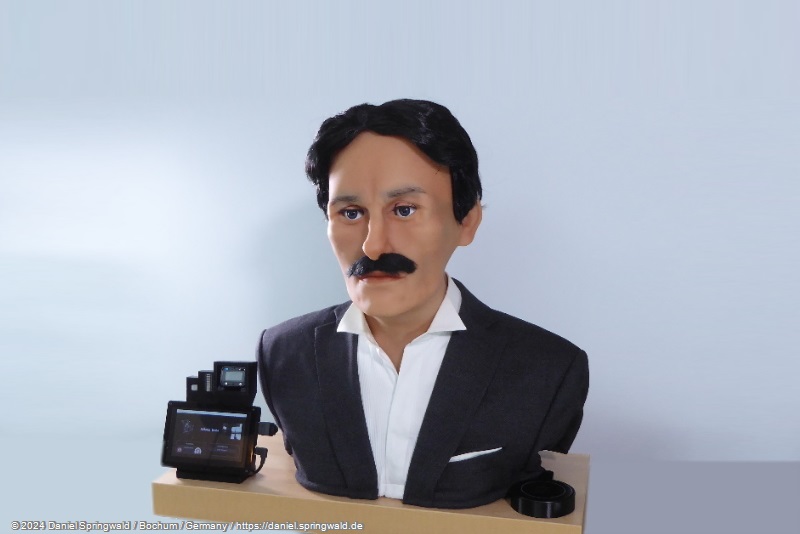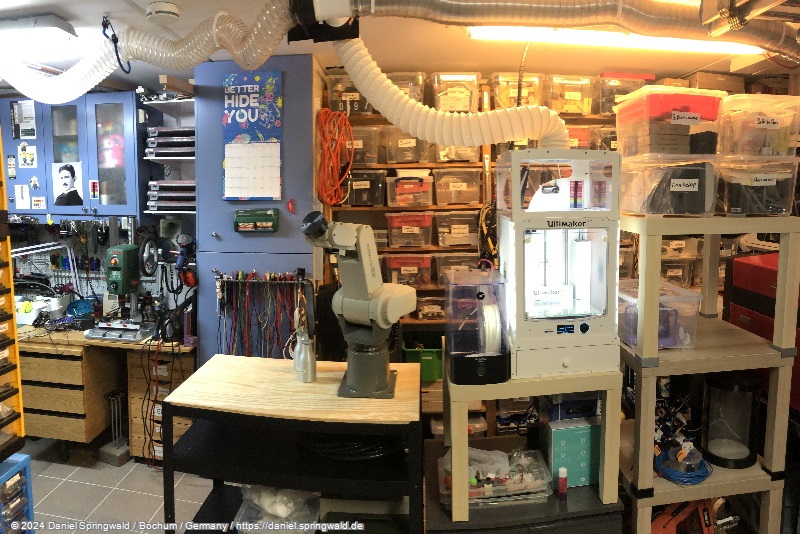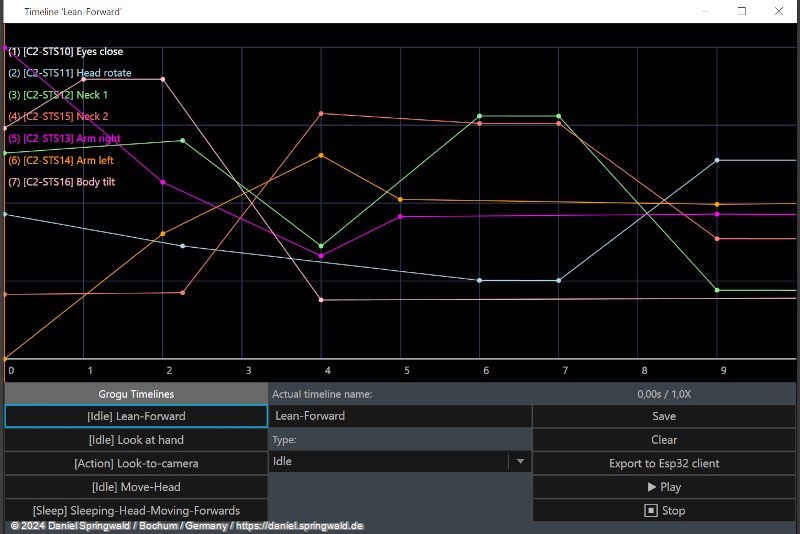Animatronic Grogu 2.0
🔸 To the other parts of "Animatronic Grogu 2.0"
YouTube Video
There is a hands-on video on the construction of the eye mechanism at YouTube video:
How the eyes work
In my first version of an animatronic grogu I had taken over the eyes of the original toy used. These had the typical folding mechanism of doll eyes, where the whole eye is rotated downwards and the eyelids are simply painted on the back of the eye.
For the new version, I would like to have a more realistic mechanism that also moves the eyelids. This should also make the winking and squinting of the eyes typical of Grogu possible.
Mechanics for the eyes
The eyelids are to be given a common mechanism for animatronic eyes, in which hemispherical eyelids are folded in front of the eyeballs. To make this look as realistic as possible, the shells should not be visible. To do this, they are connected to the artificial skin from the inside.
I designed the mechanics with the free CAD software OpenSCAD. The eyelids are divided into two halves, which are connected by a hinge. The two halves are then moved with a servo.

Unlike most other animatronic eyes (including those of my Nikola Tesla bust), I don't need the complex mechanics to move the eyes, because with Grogu the "whites of the eyes" are rarely seen. In addition, the iris is so dark that it can hardly be distinguished from the pupil.
Moving both eyelids independently of each other would be possible, but not absolutely necessary for Grogu in my opinion. Therefore, I want to move the eyelids with a single servo each for "up" and "down". The two eyelids are moved by rods.
This saves space, because the servos (together with those for mouth and ears) have to be accommodated in the head. You could also get around the lack of space by using Bowden cables, but that would only shift the problem into the body and also make the neck stiffer.
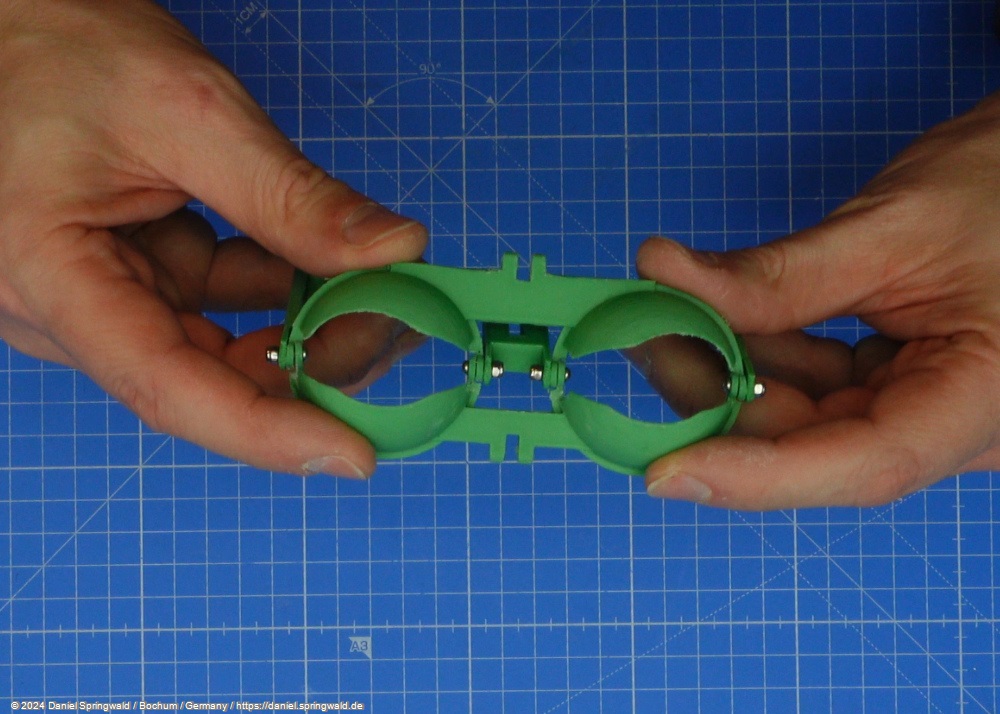
And the whole thing again with mounted levers for the servos (here the eyelids as a black version):

The eyes
I don't have to put much effort into the eyeballs themselves, as I still had them from a disassembled toy grogu. They consist of a transparent plastic hemisphere, behind which a printed image of the eye color is placed.
As an alternative to the eyes from the toy grogu, eyes from the 3D printer also work, which are simply coated with clear varnish.
It looks like this (upper variant):
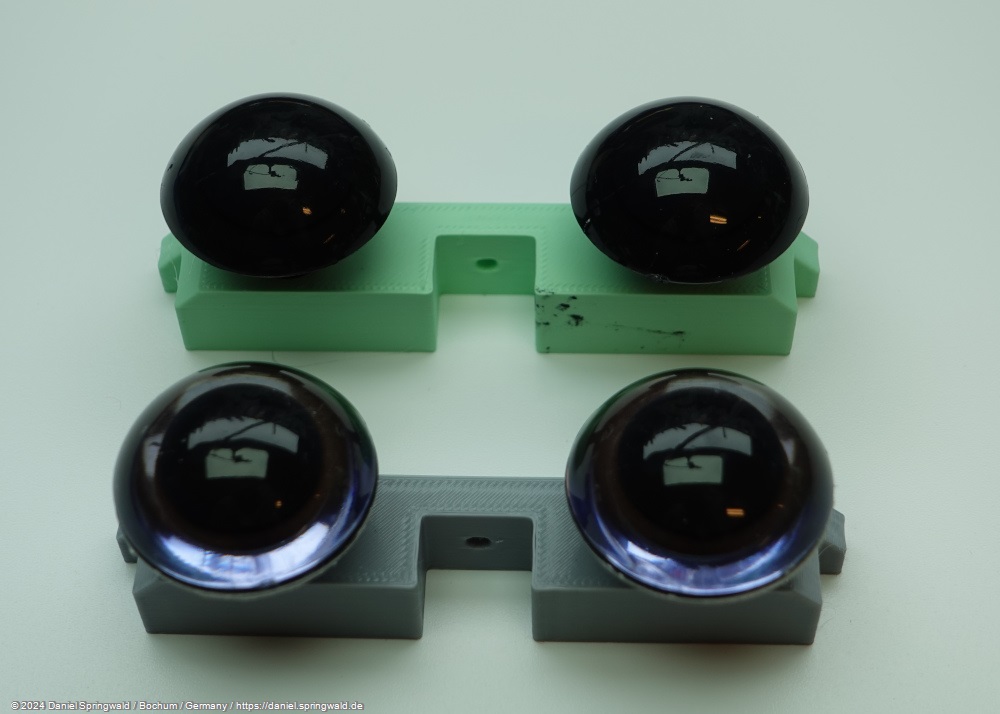
Later, I might want to cast the eyes in transparent resin to make them even more realistic. But that's for later.
A test setup of the eyelids and a servo:
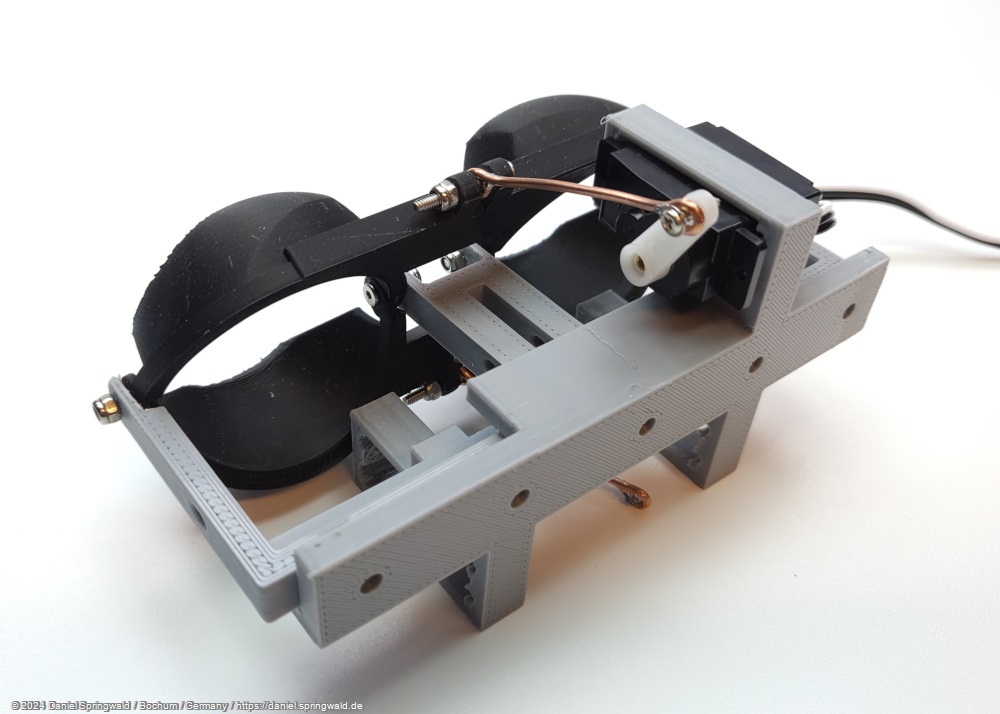

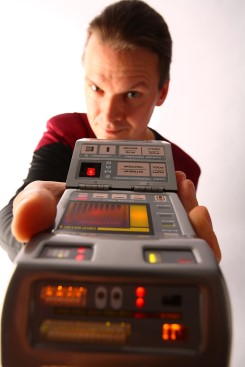 Daniel
Daniel deutsche Version anzeigen
deutsche Version anzeigen